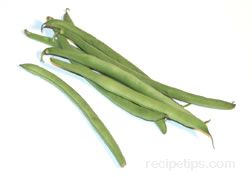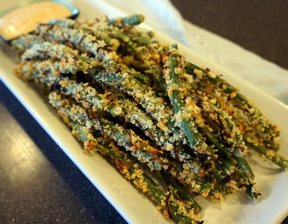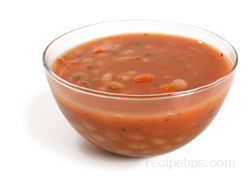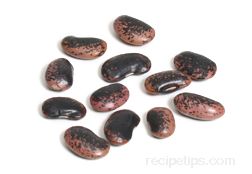Regardless of the stage in life, all beans have a "shelf life" that should be considered when preparing the beans for meals. Fresh beans, snap or shelled should be prepared shortly after picking to provide the most flavor. Dried beans can be kept for long periods of time however, the fresher the bean the more consistent the texture and flavor when cooked. Since some varieties of dried beans may remain on store shelves for long periods of time, they may become old and stale as they age, providing a tough and poor textured result when cooked. Beans can also be frozen or canned to lengthen their shelf life. However, both frozen and canned beans should only be kept for 2 or 3 months to provide a good flavor and texture when cooked. As with most foods, it is best to prepare all types of beans as soon as possible since they do not improve with age.
Loading
Bean
A generic name given to various plants in the legume family including kidney, navy, fava, pinto, lima, black, red, green, chickpea, and lentil. There are three stages of bean development, based on the maturity of the bean that determines how the bean is used. The first stage is when the bean is immature and the bean (or seed) and the pod are both very young and tender. This is the stage when the bean and pod are both eaten, either raw or cooked, and they are referred to as fresh, baby or snap beans. During the second stage, the bean begins to mature. The pod is tough but the bean can be removed from the pod, just like peas, cooked for a short period of time and eaten. Beans at this stage are referred to as fresh-shelled beans. The third stage is the point at which the pod and bean have dried on the stalk and the bean moves freely within the enclosed pod. The bean is then taken out of the pod that is to be discarded, and the bean can then be stored for future use in a variety of food dishes. At this stage the bean is referred to as a shelled, dry shelled, or dried bean.
USDA Nutrition Facts | |||||||||||||||||||||||||||||||||||||||||||||||||||||||||||||||
|
|||||||||||||||||||||||||||||||||||||||||||||||||||||||||||||||
There currently aren't any reviews or comments for this term. Be the first!
Advertisement
Advertisement















